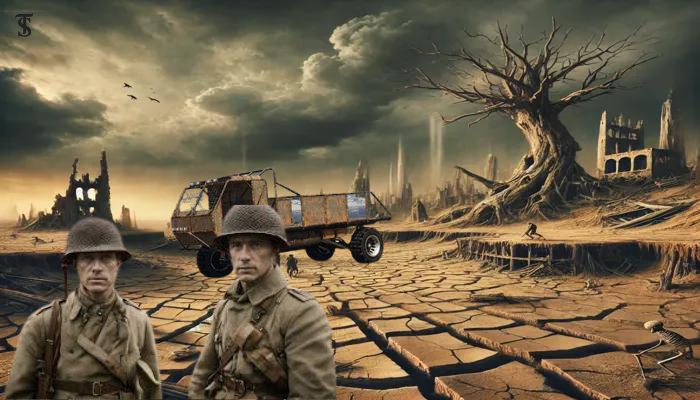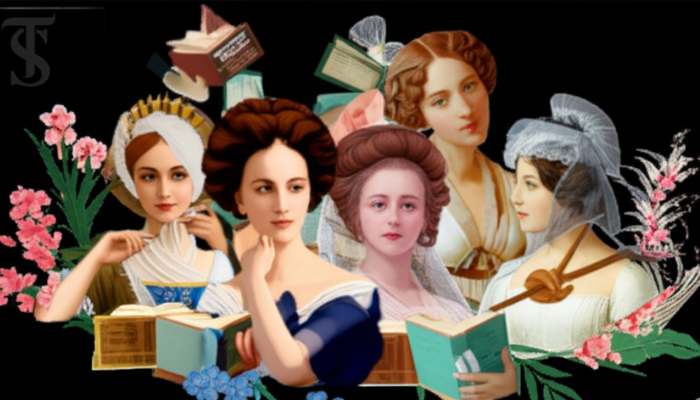The Waste Land: Eliot’s Masterpiece of Modern Despair

- Fragmentation and Spiritual Decay: "The Waste Land" reflects the post-World War I generation's fragmentation, disillusionment, and spiritual decline.
- Cultural and Literary Allusions: Eliot blends classical and modern references, from sacred texts to contemporary symbols, highlighting the disconnection from coherent narratives.
- Hope through Spiritual Rebirth: Despite the chaos, the poem suggests that recovery and renewal are possible through spiritual reform and a return to core human values.
The Waste Land, written by T.S Eliot after World War 1, in 1922, is considered a masterpiece in modern poetry. The poem mainly reflects the post-war London images, including some depictions of deserts and oceans. Eliot molds the frustration and fragmentation of the generation of the time into words. The diction is extremely impressive. It blends various poetic styles and traditions. This epic poem explores the post-war generation’s themes of decay, disappointment, and spiritual decline.
The Waste Land is divided into five sections; “The Burial of Dead”, “A Game of Chess”, “Death by Water”, “The Fire Sermon” and “What the Thunder Said”. Eliot uses a wide range of literary sources: like the sacred books of Christianity, Hinduism, and Buddhism, and references from the work of Shakespeare, Saint Augustine, Arthurian legends, Dante’s “Divine Comedy”, Wagnerian opera, and so on so forth. Despite the historical illusions, various modern symbols; for instance, the jazz music, gramophone, motorcar, and the typist have also conglomerated in the poem.
The idea of a “fragmented world” alludes to the post-war world’s disintegration and spiritual deterioration, which causes the breakdown of traditional values, cultural harmony, social integration, spirituality, and life’s meaning. The poem “The Waste Land” disjointed form serves as an example of the precarious situation of the “disintegrated modern world” civilization and its break from historical values and customs. A large number of the characters in the poem are isolated, devoid of spirituality, and preoccupied with pointless activities. Their lives are meaningless and aimless. The poem’s shifting tone represents the psychological interactions of today’s alienated and identity-devoid people, who are consequently unable to establish a meaningful sense of self.
Through the use of myth, beliefs, and historical recollections, T.S. Eliot attempts to depict, how the post-war world is cut off from coherent narratives. The poet believes that the ordered social structure of the modern world has been harmed by industrialization and conflict and that people now seek meaning and cohesion in a chaotic and disorderly environment. The poem has been the subject of numerous discussions by critics since its release. While some have referred to it as the “Lost Generation’s mouthpiece,” others have praised its utilization of literary works and allusions to other languages. Since “The Wasteland” portrays the social, psychological, spiritual, and emotional degradation of post-World War I London society, these factors are reflected in the work.
It is the essence of a discourse between a man and a woman bound by sexual conflict and a need for dominance over one another, resulting in a pointless and unsatisfied relationship. Their relationship shows no indications of emotional or spiritual attachment.
“The Burial of the Dead” reveals death and ruin, highlighting the post-war desolation of the planet. The poem opens with a positive view of life, but soon it recaptures memories and fantasies of the past and is filled with helplessness and isolation. Two of its characters are a woman who is lost in her recollections of the past and another who represents post-war situations. The poet uses the desolation of the area to symbolize the decline of the era’s societal ideals.
A “Game of Chess” uses chess as a metaphor for power struggles and the effort for control over one another, focusing on the divisions and distance in human relations following conflict. It is the essence of a discourse between a man and a woman bound by sexual conflict and a need for dominance over one another, resulting in a pointless and unsatisfied relationship. Their relationship shows no indications of emotional or spiritual attachment.
Through allusion to Buddhism, Eliot advises humans in “Fire Sermon” to abstain from worldly pleasures and cravings. Characters such as “typist” and “young man carbuncular” have a soulless and spiritless relationship when they first appear. Eliot believes that the fulfillment of material and sexual cravings has become the only goal in life for people in today’s morally and socially corrupted world. He describes London as polluted and feels that it can only be purified spiritually.
The narrative of Phlebas the Phoenician, a boat sailor who drowns in water, is told in “Death by Water,” and it emphasizes the enduring bond between life and death. Eliot hopes to convey to his audience the ambiguity of existence and the certainty of death through this occurrence. “The Waste Land” offers readers a glimmer of hope in “What the Thunder Said” by implying that, despite the worst of the current global decline, recovery is still possible—but only via spiritual reform.
The mention of “thunder” denotes a sign of hope, while “earth’s fertility” is a metaphor for people’s global turn to spirituality. This alludes to the three ideals of humanity—Dana (charity), Damayita (self-control), and “Daya” (compassion)—found in the Hindu sacred text known as the “Upanishad”. This portion addresses all of humanity, advocating for a return to spiritualism and deliverance from total materialism, rather than introducing any particular figure. The poem ends with a wish that spirituality will return to the world. It is believed that “Wasteland” prepares T.S. Eliot to get the Nobel Prize, even though his works are all unique and unparalleled.

Syed Hasib Shah
The author teaches English language, literature, and contemporary studies at a public sector institution. He writes on political, social, educational, and contemporary issues in both Urdu and English for various local newspapers.






SocialMediaGirls I really like reading through a post that can make men and women think. Also, thank you for allowing me to comment!